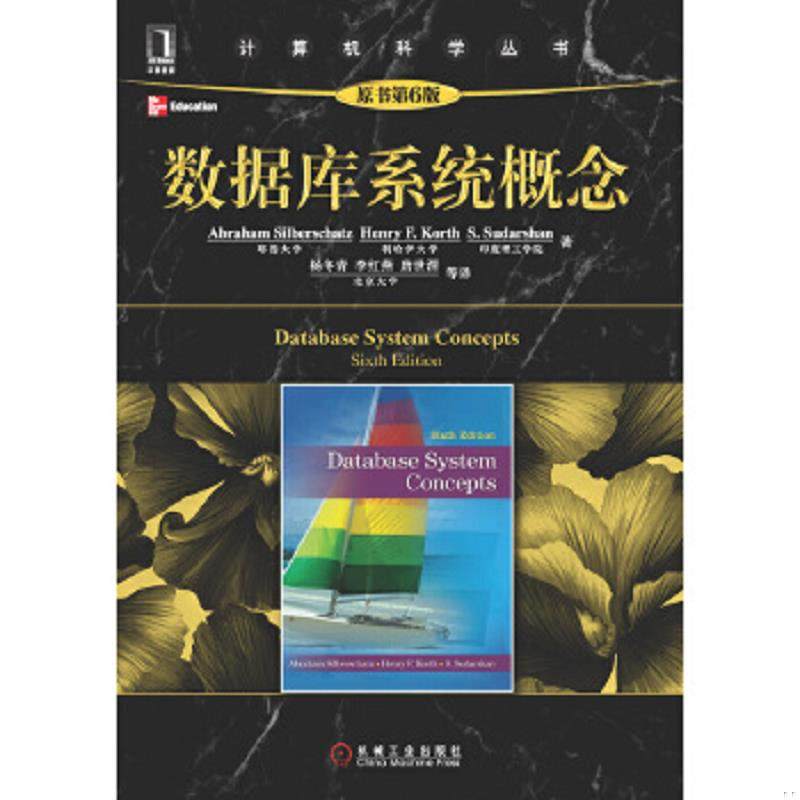我们获取数据库实例时使用了getWritableDatabase()方法,也许朋友们会有疑问,在getWritableDatabase()和getReadableDatabase()中,你为什么选择前者作为整个应用的数据库实例呢?在这里我想和大家着重分析一下这一点。
我们来看一下SQLiteOpenHelper中的getReadableDatabase()方法:
public synchronized SQLiteDatabase getReadableDatabase() {
if (mDatabase != null && mDatabase.isOpen()) {
// 如果发现mDatabase不为空并且已经打开则直接返回
return mDatabase;
}
if (mIsInitializing) {
// 如果正在初始化则抛出异常
throw new IllegalStateException("getReadableDatabase called recursively");
}
// 开始实例化数据库mDatabase
try {
// 注意这里是调用了getWritableDatabase()方法
return getWritableDatabase();
} catch (SQLiteException e) {
if (mName == null)
throw e; // Can't open a temp database read-only!
Log.e(TAG, "Couldn't open " + mName + " for writing (will try read-only):", e);
}
// 如果无法以可读写模式打开数据库 则以只读方式打开
SQLiteDatabase db = null;
try {
mIsInitializing = true;
String path = mContext.getDatabasePath(mName).getPath();// 获取数据库路径
// 以只读方式打开数据库
db = SQLiteDatabase.openDatabase(path, mFactory, SQLiteDatabase.OPEN_READONLY);
if (db.getVersion() != mNewVersion) {
throw new SQLiteException("Can't upgrade read-only database from version " + db.getVersion() + " to "
+ mNewVersion + ": " + path);
}
onOpen(db);
Log.w(TAG, "Opened " + mName + " in read-only mode");
mDatabase = db;// 为mDatabase指定新打开的数据库
return mDatabase;// 返回打开的数据库
} finally {
mIsInitializing = false;
if (db != null && db != mDatabase)
db.close();
}
}
在getReadableDatabase()方法中,首先判断是否已存在数据库实例并且是打开状态,如果是,则直接返回该实例,否则试图获取一个可读写模式的数据库实例,如果遇到磁盘空间已满等情况获取失败的话,再以只读模式打开数据库,获取数据库实例并返回,然后为mDatabase赋值为最新打开的数据库实例。既然有可能调用到getWritableDatabase()方法,我们就要看一下了:
public synchronized SQLiteDatabase getWritableDatabase() {
if (mDatabase != null && mDatabase.isOpen() && !mDatabase.isReadOnly()) {
// 如果mDatabase不为空已打开并且不是只读模式 则返回该实例
return mDatabase;
}
if (mIsInitializing) {
throw new IllegalStateException("getWritableDatabase called recursively");
}
// If we have a read-only database open, someone could be using it
// (though they shouldn't), which would cause a lock to be held on
// the file, and our attempts to open the database read-write would
// fail waiting for the file lock. To prevent that, we acquire the
// lock on the read-only database, which shuts out other users.
boolean success = false;
SQLiteDatabase db = null;
// 如果mDatabase不为空则加锁 阻止其他的操作
if (mDatabase != null)
mDatabase.lock();
try {
mIsInitializing = true;
if (mName == null) {
db = SQLiteDatabase.create(null);
} else {
// 打开或创建数据库
db = mContext.openOrCreateDatabase(mName, 0, mFactory);
}
// 获取数据库版本(如果刚创建的数据库,版本为0)
int version = db.getVersion();
// 比较版本(我们代码中的版本mNewVersion为1)
if (version != mNewVersion) {
db.beginTransaction();// 开始事务
try {
if (version == 0) {
// 执行我们的onCreate方法
onCreate(db);
} else {
// 如果我们应用升级了mNewVersion为2,而原版本为1则执行onUpgrade方法
onUpgrade(db, version, mNewVersion);
}
db.setVersion(mNewVersion);// 设置最新版本
db.setTransactionSuccessful();// 设置事务成功
} finally {
db.endTransaction();// 结束事务
}
}
onOpen(db);
success = true;
return db;// 返回可读写模式的数据库实例
} finally {
mIsInitializing = false;
if (success) {
// 打开成功
if (mDatabase != null) {
// 如果mDatabase有值则先关闭
try {
mDatabase.close();
} catch (Exception e) {
}
mDatabase.unlock();// 解锁
}
mDatabase = db;// 赋值给mDatabase
} else {
// 打开失败的情况:解锁、关闭
if (mDatabase != null)
mDatabase.unlock();
if (db != null)
db.close();
}
}
}
大家可以看到,几个关键步骤是,首先判断mDatabase如果不为空已打开并不是只读模式则直接返回,否则如果mDatabase不为空则加锁,然后开始打开或创建数据库,比较版本,根据版本号来调用相应的方法,为数据库设置新版本号,最后释放旧的不为空的mDatabase并解锁,把新打开的数据库实例赋予mDatabase,并返回最新实例。
看完上面的过程之后,大家或许就清楚了许多,如果不是在遇到磁盘空间已满等情况,getReadableDatabase()一般都会返回和getWritableDatabase()一样的数据库实例,所以我们在DBManager构造方法中使用getWritableDatabase()获取整个应用所使用的数据库实例是可行的。当然如果你真的担心这种情况会发生,那么你可以先用getWritableDatabase()获取数据实例,如果遇到异常,再试图用getReadableDatabase()获取实例,当然这个时候你获取的实例只能读不能写了。
最后,让我们看一下如何使用这些数据操作方法来显示数据,下面是MainActivity.Java的布局文件和代码:
<?xml version="1.0" encoding="utf-8"?>
<LinearLayout xmlns:android="http://schemas.android.com/apk/res/android"
android:orientation="vertical"
android:layout_width="fill_parent"
android:layout_height="fill_parent">
<Button
android:layout_width="fill_parent"
android:layout_height="wrap_content"
android:text="add"
android:onClick="add"/>
<Button
android:layout_width="fill_parent"
android:layout_height="wrap_content"
android:text="update"
android:onClick="update"/>
<Button
android:layout_width="fill_parent"
android:layout_height="wrap_content"
android:text="delete"
android:onClick="delete"/>
<Button
android:layout_width="fill_parent"
android:layout_height="wrap_content"
android:text="query"
android:onClick="query"/>
<Button
android:layout_width="fill_parent"
android:layout_height="wrap_content"
android:text="queryTheCursor"
android:onClick="queryTheCursor"/>
<ListView
android:id="@+id/listView"
android:layout_width="fill_parent"
android:layout_height="wrap_content"/>
</LinearLayout>
package com.scott.db;
import java.util.ArrayList;
import java.util.HashMap;
import java.util.List;
import java.util.Map;
import android.app.Activity;
import android.database.Cursor;
import android.database.CursorWrapper;
import android.os.Bundle;
import android.view.View;
import android.widget.ListView;
import android.widget.SimpleAdapter;
import android.widget.SimpleCursorAdapter;
public class MainActivity extends Activity {
private DBManager mgr;
private ListView listView;
@Override
public void onCreate(Bundle savedInstanceState) {
super.onCreate(savedInstanceState);
setContentView(R.layout.main);
listView = (ListView) findViewById(R.id.listView);
//初始化DBManager
mgr = new DBManager(this);
}
@Override
protected void onDestroy() {
super.onDestroy();
//应用的最后一个Activity关闭时应释放DB
mgr.closeDB();
}
public void add(View view) {
ArrayList<Person> persons = new ArrayList<Person>();
Person person1 = new Person("Ella", 22, "lively girl");
Person person2 = new Person("Jenny", 22, "beautiful girl");
Person person3 = new Person("Jessica", 23, "sexy girl");
Person person4 = new Person("Kelly", 23, "hot baby");
Person person5 = new Person("Jane", 25, "a pretty woman");
persons.add(person1);
persons.add(person2);
persons.add(person3);
persons.add(person4);
persons.add(person5);
mgr.add(persons);
}
public void update(View view) {
Person person = new Person();
person.name = "Jane";
person.age = 30;
mgr.updateAge(person);
}
public void delete(View view) {
Person person = new Person();
person.age = 30;
mgr.deleteOldPerson(person);
}
public void query(View view) {
List<Person> persons = mgr.query();
ArrayList<Map<String, String>> list = new ArrayList<Map<String, String>>();
for (Person person : persons) {
HashMap<String, String> map = new HashMap<String, String>();
map.put("name", person.name);
map.put("info", person.age + " years old, " + person.info);
list.add(map);
}
SimpleAdapter adapter = new SimpleAdapter(this, list, android.R.layout.simple_list_item_2,
new String[]{"name", "info"}, new int[]{android.R.id.text1, android.R.id.text2});
listView.setAdapter(adapter);
}
public void queryTheCursor(View view) {
Cursor c = mgr.queryTheCursor();
startManagingCursor(c); //托付给activity根据自己的生命周期去管理Cursor的生命周期
CursorWrapper cursorWrapper = new CursorWrapper(c) {
@Override
public String getString(int columnIndex) {
//将简介前加上年龄
if (getColumnName(columnIndex).equals("info")) {
int age = getInt(getColumnIndex("age"));
return age + " years old, " + super.getString(columnIndex);
}
return super.getString(columnIndex);
}
};
//确保查询结果中有"_id"列
SimpleCursorAdapter adapter = new SimpleCursorAdapter(this, android.R.layout.simple_list_item_2,
cursorWrapper, new String[]{"name", "info"}, new int[]{android.R.id.text1, android.R.id.text2});
ListView listView = (ListView) findViewById(R.id.listView);
listView.setAdapter(adapter);
}
}
这里需要注意的是SimpleCursorAdapter的应用,当我们使用这个适配器时,我们必须先得到一个Cursor对象,这里面有几个问题:如何管理Cursor的生命周期,如果包装Cursor,Cursor结果集都需要注意什么。
如果手动去管理Cursor的话会非常的麻烦,还有一定的风险,处理不当的话运行期间就会出现异常,幸好Activity为我们提供了startManagingCursor(Cursor cursor)方法,它会根据Activity的生命周期去管理当前的Cursor对象,下面是该方法的说明:
/**
* This method allows the activity to take care of managing the given
* {@link Cursor}'s lifecycle for you based on the activity's lifecycle.
* That is, when the activity is stopped it will automatically call
* {@link Cursor#deactivate} on the given Cursor, and when it is later restarted
* it will call {@link Cursor#requery} for you. When the activity is
* destroyed, all managed Cursors will be closed automatically.
*
* @param c The Cursor to be managed.
*
* @see #managedQuery(android.net.Uri , String[], String, String[], String)
* @see #stopManagingCursor
*/
文中提到,startManagingCursor方法会根据Activity的生命周期去管理当前的Cursor对象的生命周期,就是说当Activity停止时他会自动调用Cursor的deactivate方法,禁用游标,当Activity重新回到屏幕时它会调用Cursor的requery方法再次查询,当Activity摧毁时,被管理的Cursor都会自动关闭释放。
如何包装Cursor:我们会使用到CursorWrapper对象去包装我们的Cursor对象,实现我们需要的数据转换工作,这个CursorWrapper实际上是实现了Cursor接口。我们查询获取到的Cursor其实是Cursor的引用,而系统实际返回给我们的必然是Cursor接口的一个实现类的对象实例,我们用CursorWrapper包装这个实例,然后再使用SimpleCursorAdapter将结果显示到列表上。
Cursor结果集需要注意些什么:一个最需要注意的是,在我们的结果集中必须要包含一个“_id”的列,否则SimpleCursorAdapter就会翻脸不认人,为什么一定要这样呢?因为这源于SQLite的规范,主键以“_id”为标准。解决办法有
三:第一,建表时根据规范去做;第二,查询时用别名,例如:SELECT id AS _id FROM person;第三,在CursorWrapper里做文章:
CursorWrapper cursorWrapper = new CursorWrapper(c) {
@Override
public int getColumnIndexOrThrow(String columnName) throws IllegalArgumentException {
if (columnName.equals("_id")) {
return super.getColumnIndex("id");
}
return super.getColumnIndexOrThrow(columnName);
}
};
如果试图从CursorWrapper里获取“_id”对应的列索引,我们就返回查询结果里“id”对应的列索引即可。
最后我们来看一下结果如何:
感谢阅读,希望能帮助到大家,谢谢大家对本站的支持!
标签:SQLite
相关阅读 >>
scrapy+scrapyd+gerapy爬虫调度框架超详细教程
android将图片转换存到数据库再从数据库读取转换成图片实现代码
.net6跨服务器联表查询操作mysql、oracle、sqlserver等相互联表
unity3d运行报dllnotfoundexception错误的解决方案
datagrip 格式化sql的实现方法(自定义sql格式化)
更多相关阅读请进入《Sqlite》频道 >>

数据库系统概念 第6版
本书主要讲述了数据模型、基于对象的数据库和XML、数据存储和查询、事务管理、体系结构等方面的内容。




